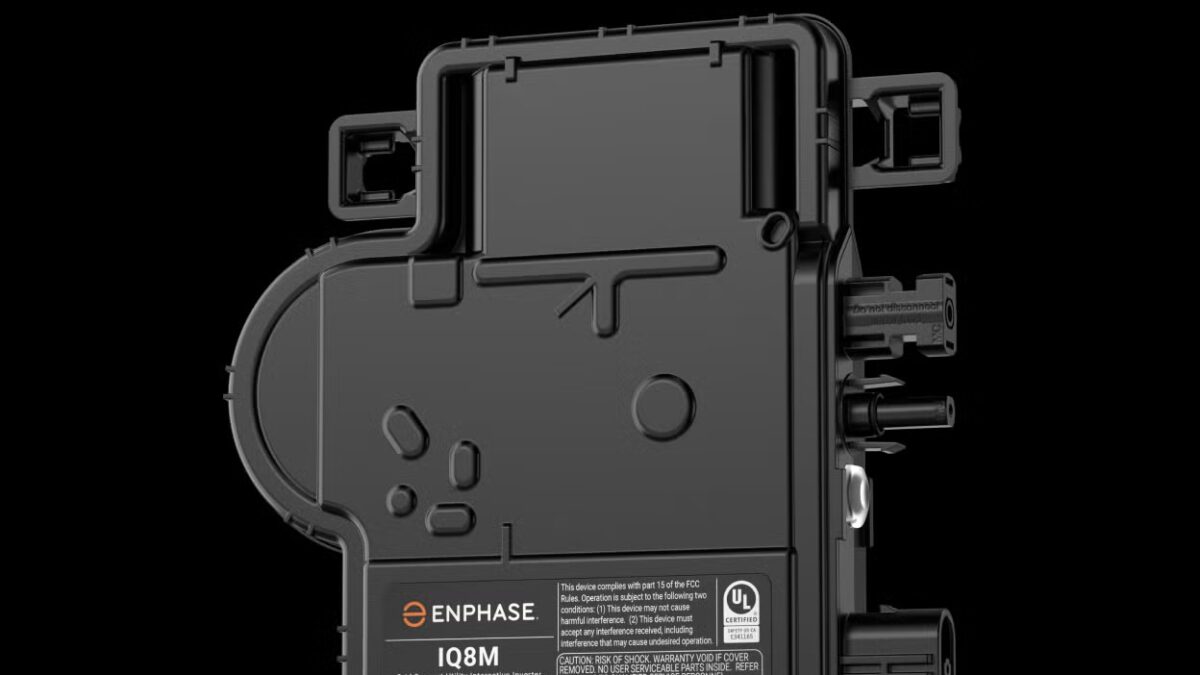
Stewardship & Sustainability: Drivers of Change at Zenger Farm
March 28, 2018To determine the best Enphase microinverter for the Silfab SIL-440 QD solar panel, we need to match the panel’s electrical specifications with an Enphase IQ8 series microinverter, considering factors like power output, voltage, current, and DC/AC ratio to minimize clipping and optimize performance. Below is a detailed analysis based on available information.
Silfab SIL-440 QD Specifications
The Silfab SIL-440 QD is a 440-watt monocrystalline solar panel with the following key electrical parameters (based on typical specifications for this model from web sources):
- Maximum Power (Pmax): 440 W
- Maximum Power Voltage (Vmp): ~41.0 V (estimated, as exact values may vary slightly)
- Maximum Power Current (Imp): ~10.73 A (estimated)
- Open Circuit Voltage (Voc): ~49.0 V (estimated)
- Short Circuit Current (Isc): ~11.3 A (estimated)
- Nominal Module Operating Temperature (NMOT) Power: ~327 W (based on similar panels, as NMOT reduces output compared to STC)
These values are approximations based on similar Silfab panels (e.g., SIL-430 QD) and industry standards, as exact datasheet values for the SIL-440 QD were not provided in the search results.
Enphase IQ8 Microinverter Options
Enphase’s IQ8 series microinverters are designed for high-efficiency solar systems and are compatible with a range of panel sizes. The relevant models for the Silfab SIL-440 QD include:
- IQ8+: 235–440 W input, 290 W max continuous AC output, 60 V max DC input, 14 A max DC input
- IQ8M: 260–460 W input, 325 W max continuous AC output, 60 V max DC input, 14 A max DC input
- IQ8A: 280–460 W input, 349 W max continuous AC output, 60 V max DC input, 12 A max DC input
- IQ8HC: 295–500 W input, 380 W max continuous AC output, 60 V max DC input, 14 A max DC input
- IQ8X: Up to 505 W input, 320 W max continuous AC output, 65 V max DC input, 12 A max DC input (designed for higher-voltage modules like REC Alpha Pure)
Key Considerations
- Power Compatibility: The microinverter’s input power range should encompass the panel’s 440 W STC rating and ~327 W NMOT rating to avoid under-sizing or excessive clipping.
- DC/AC Ratio: A DC/AC ratio of 1.2 to 1.4 is often recommended to balance cost and performance, as it allows slight clipping during peak production while optimizing efficiency in typical conditions.
- Clipping: If the microinverter’s AC output is significantly lower than the panel’s DC output, clipping occurs, limiting peak power production. This is more likely in sunny, south-facing installations.
- Voltage and Current: The panel’s Vmp and Imp must not exceed the microinverter’s maximum input voltage (60 V for most IQ8 models, 65 V for IQ8X) or current (12–14 A).
- Cost vs. Performance: Higher-output microinverters (e.g., IQ8HC) cost more but reduce clipping, while lower-output models (e.g., IQ8+) are cheaper but may clip in ideal conditions.
Analysis of Microinverter Options
- IQ8+ (290 W AC output):
- DC/AC ratio: 440 W / 290 W = ~1.52 (STC), 327 W / 290 W = ~1.13 (NMOT)
- Pros: Cost-effective, suitable for moderate climates or shaded roofs where peak output is rarely reached.
- Cons: High DC/AC ratio at STC suggests significant clipping in sunny conditions (e.g., south-facing roofs in high-insolation areas), potentially losing 10–20% of peak production.
- Suitability: Suboptimal for high-production scenarios due to clipping.
- IQ8M (325 W AC output):
- DC/AC ratio: 440 W / 325 W = ~1.35 (STC), 327 W / 325 W = ~1.01 (NMOT)
- Pros: Better match for the panel’s NMOT output, reducing clipping in typical conditions. The 1.35 DC/AC ratio at STC is within the recommended 1.2–1.4 range, balancing cost and performance. Compatible with the panel’s voltage and current.
- Cons: Minor clipping possible during peak STC conditions in very sunny locations.
- Suitability: Likely the best balance for most installations, especially in moderate climates.
- IQ8A (349 W AC output):
- DC/AC ratio: 440 W / 349 W = ~1.26 (STC), 327 W / 349 W = ~0.94 (NMOT)
- Pros: Lower DC/AC ratio reduces clipping further, maximizing production in high-insolation areas. Compatible with the panel’s specs.
- Cons: Slightly more expensive than IQ8M, with minimal additional benefit in low-to-moderate production scenarios.
- Suitability: Good for sunny, unshaded roofs where maximizing peak output is a priority.
- IQ8HC (380 W AC output):
- DC/AC ratio: 440 W / 380 W = ~1.16 (STC), 327 W / 380 W = ~0.86 (NMOT)
- Pros: Minimizes clipping, capturing nearly all peak production. Ideal for high-insolation, unshaded installations.
- Cons: Higher cost, potentially overkill for moderate climates or shaded roofs where the panel rarely reaches 380 W.
- Suitability: Best for maximizing output in ideal conditions but may not justify the cost in less optimal setups.
- IQ8X (320 W AC output, 65 V max DC input):
- DC/AC ratio: 440 W / 320 W = ~1.38 (STC), 327 W / 320 W = ~1.02 (NMOT)
- Pros: Designed for high-voltage modules, but the Silfab SIL-440 QD’s ~49 V Voc is well within the 60 V limit of other IQ8 models, making IQ8X unnecessary. Similar performance to IQ8M.
- Cons: Higher cost and no significant advantage for this panel’s voltage range.
- Suitability: Not recommended unless using higher-voltage panels.
Recommendation
The Enphase IQ8M is the best match for the Silfab SIL-440 QD panel in most scenarios. Here’s why:
- Optimal DC/AC Ratio: The 1.35 ratio at STC falls within the recommended 1.2–1.4 range, balancing efficiency and cost. At NMOT (~327 W), the ratio is near 1.0, minimizing clipping in typical conditions.
- Compatibility: The IQ8M supports 260–460 W panels, fully encompassing the Silfab’s 440 W STC and ~327 W NMOT output, with compatible voltage (~41 V Vmp, ~49 V Voc) and current (~10.73 A Imp).
- Cost-Effectiveness: The IQ8M avoids the higher cost of the IQ8A or IQ8HC, which offer marginal benefits unless the system is in a high-insolation, unshaded location.
- Performance: Discussions on Reddit and industry sources suggest the IQ8M is a better fit than the IQ8+ for 430–440 W panels, reducing clipping while keeping costs reasonable.
Considerations
- Location and Orientation: If your installation is in a sunny, south-facing location with minimal shading (e.g., Texas, Arizona), the IQ8A or IQ8HC may be worth considering to further reduce clipping, especially if electricity rates are high. In moderate climates (e.g., Virginia) or shaded setups, the IQ8M is sufficient.
- Installer Feedback: Consult your installer for a simulation (e.g., using PVWatts or Enphase’s compatibility calculator) to confirm clipping impacts based on your roof’s azimuth, tilt, and local climate.
- Cost: If the price difference between IQ8M and IQ8A/IQ8HC is small (e.g., $25 per inverter), the IQ8A could be a worthwhile upgrade for unshaded, high-production roofs.
Verification
Use Enphase’s IQ Microinverter Compatibility Calculator (available at enphase.com) to confirm compatibility by entering the Silfab SIL-440 QD’s exact specifications (Voc, Vmp, Imp, Isc, Pmax). Ensure the panel’s parameters do not exceed the microinverter’s maximum input voltage (60 V for IQ8M) or current (14 A).
Final Answer
The Enphase IQ8M microinverter is the best choice for the Silfab SIL-440 QD panel, offering an optimal DC/AC ratio (1.35 at STC), compatibility with the panel’s electrical specs, and a cost-effective balance that minimizes clipping in most conditions. For high-insolation, unshaded installations, consider the IQ8A or IQ8HC to further reduce clipping, but the IQ8M is generally sufficient. Verify compatibility using Enphase’s calculator and consult your installer for location-specific simulations.

